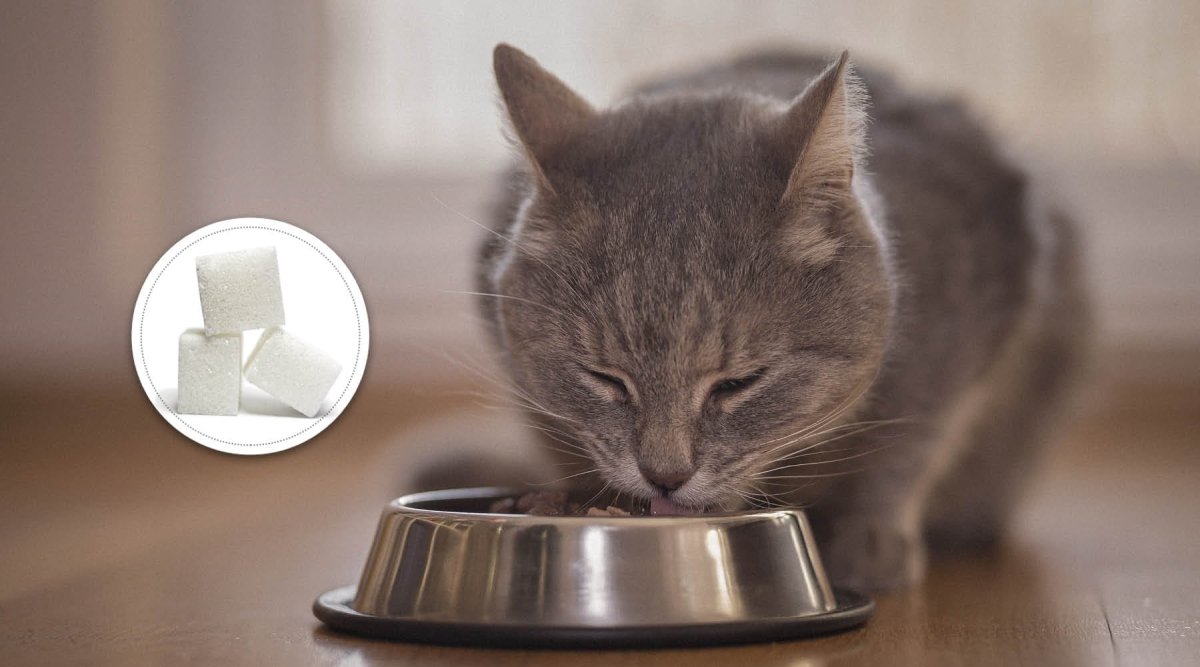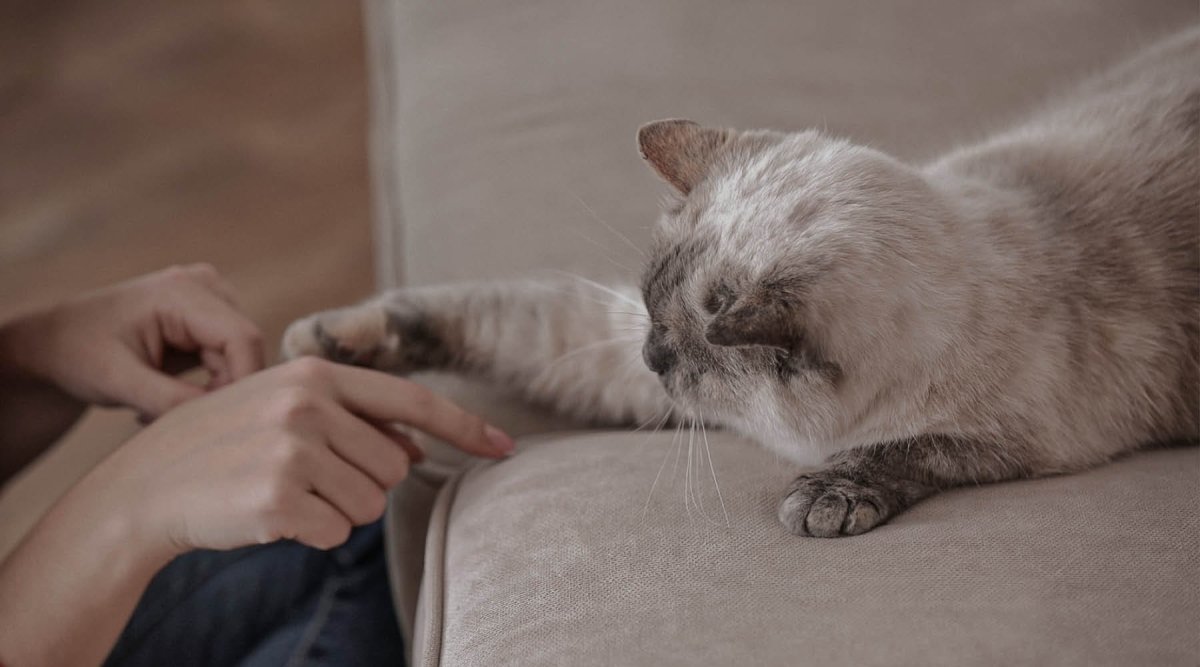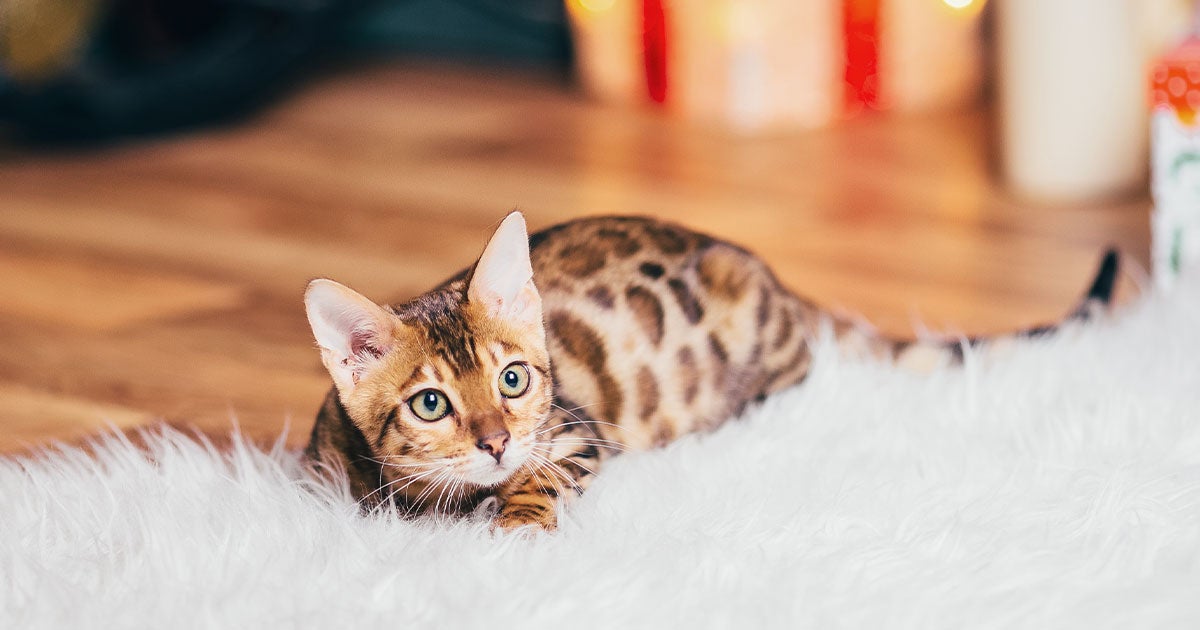Conventional cat food often contains a high proportion of sugar, but this is only for the human eye. Its nutritional benefit for the animals is zero. Today, our veterinary practitioner explains why cats can do without sugary cat food and how you can switch your little tiger to natural products.
Why does cat food contain sugar?
Sugar has various functions in many types of cat food:
-
Food cosmetics
The meat color is often lost when the meat/vegetable mixture is overcooked. The colouring caused by the caramelization of the sugar ensures that the sauce and meat appear nice and dark (Maillard reaction). -
Preservative
Sugar is used to extend the shelf life of cat food, e.g. for semi-moist snacks. -
Flavor enhancer
Sugar enhances the taste of the cat food.
If you want to find out whether the food your cat's food contains sugar is sometimes more complicated than you might think. Because sugar has many faces. The following names, which you can read on the packaging of cat food, stand for ingredients containing sugar: sucrose, sucrose, dextrose, dextrose, fructose, molasses, malt germ, beet pulp, glucose, caramel, cellulose, cereals, maltose.
The amount of added sugar in cat food is often disguised by the fact that the individual ingredients are listed separately and therefore appear further back in the list of quantities.
Why cats don't need sugar
Your cat has a very low glucose requirement, which it can cover completely with meat. It gets its energy from animal proteins and fats. To digest sugar or starch, however, your velvet paw lacks the necessary enzymes in sufficient quantities. They do not have amylases in their saliva that can break down long-chain sugars, nor do they have sufficient glucokinase - an enzyme in the liver and pancreas that can break down glucose.
Nevertheless, some cat owners believe their pet is addicted to the sweet taste of cat food. But your cat has no taste receptors for sweetness, so it does not directly perceive the sugar in its cat food. The addictive effect is questionable. However, this sugar does cause illnesses in some animals that would not have occurred without it.
Sugar causes diseases in cats
The following diseases can occur as a result of excessive consumption of sugar in cat food:
Obesity
Not only a lack of exercise and too much cat food can lead to obesity, excess sugar can also be converted to fat and stored.
Diabetes
Diabetes is considered a consequence of being overweight. The constant addition of sugar also results in increased blood sugar levels in the blood, which can lead to the development of diabetes. However, concrete studies in cats are still pending.
Diarrhea
Due to the inability to break down the sugar properly, it is excreted from your cat's body via the urine. Too much sugar in cat food can also lead to diarrhea. This puts excessive strain on the intestines and kidneys.
Overworking the pancreas
Another consequence of too much sugar in cat food is overworking the pancreas. With constant sugar consumption, the pancreas has to produce an unnaturally large number of enzymes to break down the sugar. At the same time, insulin production also increases. Diabetes or pancreatic insufficiency could be the result.
Caries
Fortunately, this is not an issue with cats. They are protected from this by the high pH value of the oral cavity. This neutralizes organic acids that would otherwise attack the tooth enamel. Nevertheless, the above diseases should be reason enough to switch to sugar-free cat food.
How do I switch my cat to sugar-free cat food?
Sugar has no nutritional value for your cat, but is a burden on its body. As a rule, cats do not show any withdrawal symptoms when they have to go without it, but many animals do not like the change of food to a different, perhaps natural diet at all.
Why is switching cat food often difficult?
Your cat eats what it knows. This tried and tested system protects them from danger in the wild. The little tigers get to know tastes at an early age and usually remain loyal to them for the rest of their lives. In nature, the mother cat regulates this taste education. Even in the womb, the unborn kitten learns what its mother cat will and will not eat. If we as humans take control of the cat's food, we also shape the little kittens from day one: The choice of food is therefore inherited.
In general, it is very important to feed growing cats and expectant mothers a varied diet. Different manufacturers, varieties, wet and raw food offer a wide range of flavors. This makes it easier to change the cat's food if necessary at a later date (e.g. due to allergies).
Two methods for changing a cat's diet
If you ever have to change a cat that is very picky and would like to stick to its familiar cat food, there are various ways to achieve this.
1. the two-bowl method
To do this, place a bowl of the new cat food next to the familiar cat food. At first, the new bowl will not be touched, but your cat can gradually get used to the smell. With a bit of luck, he will try the new cat food and you can leave out the old one over time.
2. substitution method
To do this, mix the new cat food into the old very slowly and in very small quantities. The amount of old cat food is reduced by the amount of new cat food. For particularly fussy animals, it is best to start with ¼ teaspoon of the new cat food to the usual amount of the old cat food. Slowly increase this addition over 14 days or longer and then start to reduce the old cat food. To avoid having to throw away any cat food during this changeover, you can freeze the contents of a tin in ice cube trays and defrost only as required.
To make the "sugar-free cat food" project a success, you should stick to fixed feeding times, not give any additional treats and spice up your pet's food, which may be too solid, with some home-cooked chicken stock if your cat is used to gravy.
You can also recognize natural cat food with a high meat content by its firm consistency. This cat food contains no sugar and is very healthy for your cat.
And another tip: cats are clever and know exactly what they can achieve with a puppy dog look and heart-warming crying. It is therefore very important to remain consistent when making the switch. However, your cat must not go hungry for several days.



